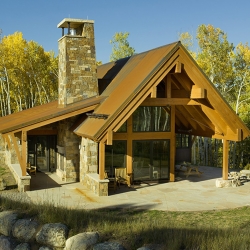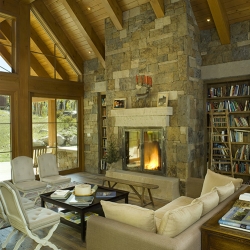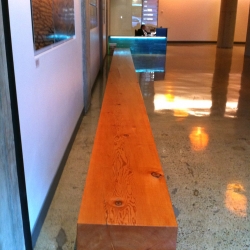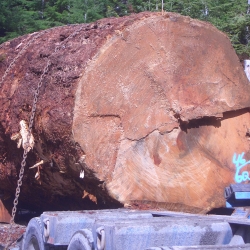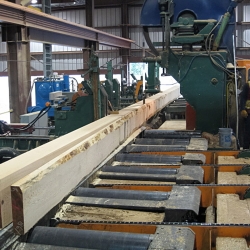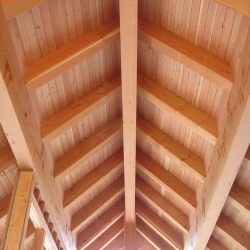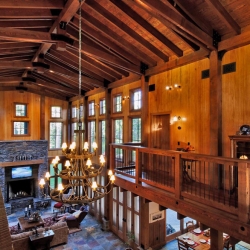Douglas Fir: The strongest of all North American softwoods
Douglas Fir is the most common softwood utilized in North American construction. From the coastal region of Oregon, Washington, and the interior of British Colombia, this species is one of the strongest of all North American softwoods. The wood of Douglas Fir is straight grained, tough, resilient and moderately hard. It is relatively easy to season, in the open or by kiln drying, and shows little tendency to check, warp or cup. Douglas Fir is unique among all softwood species in that it is naturally dimensionally stable, having the ability to season well in position.
Many builders prefer to cut, nail and fasten Douglas Fir in the “green” or unseasoned condition, allowing it to air dry during construction. The heartwood color varies from a soft yellow to reddish brown. It has a narrow band of whitish sapwood. Douglas Fir is known for its distinctive grain patterns created by the varying degrees of spring and summer wood in the grain which produces a distinct and unique attractive pattern when flat sawn.
-
Ideal for structural timber applications
-
Distinctive grain patterns created by the varying degrees of spring and summer wood
-
Soft yellow to reddish brown heartwood with a narrow band of whitish sapwood
The stiffness and durability of Douglas Fir makes it ideal for all forms of structural applications. As with Alaska Hemlock and Sitka Spruce, the large straight-grained logs and reclaimed beams of the Douglas Fir produce some of the finest large size structural timbers available in the market.
Straight, tight grained, tough, resilient, and moderately hard
This species excels for interior woodwork as well. It is beautifully figured, easily finished and has a subtle wearing surface that can be stained or clear coated; it retains an excellent paint finish. Vertical grain Douglas Fir offers an attractive appearance for interior floors, false beam wrap, paneling, and siding.

